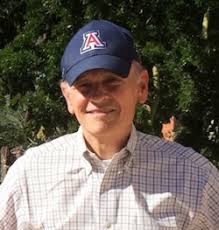Affiliation: University of Arizona

Dr. David Gilman Romano is the Nicholas and Athena Karabots Professor of Greek Archaeology, School of Anthropology, University of Arizona, and holds his degrees from Washington University in St. Louis, University of Oregon (MA), and the University of Pennsylvania (PhD). He has been involved in archaeological work in Greece for 40 years and is a specialist in the Ancient Olympic Games, Greek and Roman cities and sanctuaries, ancient surveying, and modern cartographic and survey techniques to reveal and study ancient sites. He has directed the Corinth Computer Project since 1988, and he is the Director of the Archaeological Mapping Lab in the School of Anthropology. Dr. Romano is the Field Director and Co-Director of the Mt. Lykaion Excavation and Survey Project, a founding member of the Parrhasian Heritage Park and Director of the Digital Augustan Rome project.
Since 2004 the Mt. Lykaion Excavation and Survey Project, a synergasia project between the University of Arizona and the Ephorate of Arcadian Antiquities, under the auspices of the American School of Classical Studies, has been at work in Arcadia excavating at the “birthplace of Zeus.” Found at the southern peak of Mt. Lykaion is an ash altar of Zeus that includes large amounts of Late Helladic pottery. Because of the discovery of human and animal terracotta figurines it is clear that the ash altar was the location of a mountaintop Mycenaean shrine. Burned femurs from the altar have been dated by C14 to as early as the 16th century B.C. suggesting that the burned dedication of goats and sheep were underway by that time. Earlier pottery from the Neolithic, Early Helladic and Middle Helladic periods has also been found in the area of the altar of Zeus although it is not yet
clear what these people were doing at the mountain peak. The lower sanctuary at Mt. Lykaion was the site of the athletic festival the Lykaia known from literary and epigraphical sources. Twenty-two miles away, as the eagle flies, from Mt. Lykaion is the Sanctuary of Zeus at Olympia site of the famous ancient Olympic Games. Excavations by the Deutsches Archaeologishes Institut have discovered the remains of the historically attested (Pausanias) ash altar of Zeus in the altis at Olympia. The earliest evidence for this ash altar dates to after 1050 B.C. Could the ash altar of Zeus at Mt. Lykaion have been the model for the ash altar at Olympia?
Short bibliography and/or website on lecture topic:
Mt. Lykaion Excavation and Survey Project website: http://lykaionexcavation.org